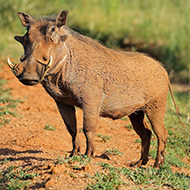Evidence that poached ivory is being intentionally mislabelled as mammoth ivory.
The trade in mammoth tusks poses a threat to elephants, experts have warned in a new report.
Around 60 tons a year of mammoth ivory is exported out of Siberia’s Sakha region. The majority of it is being sold to China, which is also the largest destination for illegal elephant ivory.
Mammoth ivory is similar to elephant ivory, especially when cut into smaller pieces. There is evidence that traders are intentionally mislabelling illegal elephant tusks as mammoth tusks in order to sell them.
Luke Hauser, co-investigator on the study, explained: “The first mammoths appeared in Africa around five million years ago, and radiated into at least ten species; all originating from the same family of modern elephants, known as Elephantidae.
“Structurally, mammoth ivory is fundamentally identical to elephant ivory. Both have Schreger lines, which are distinct characteristics of the species.”
Poachers in Africa kill an estimated 30,000 elephants a year for their tusks, despite conservation efforts to tackle the trade.
The international ivory trade is regulated by the Convention on International Trade in Endangered Species of Wild Fauna and Flora (CITES), an agreement to protect at-risk species.
However, CITES does not currently cover mammoth ivory, allowing it to be bought and sold. A petition from Israel in 2019 to include woolly mammoth ivory was unsuccessful.
With climate change causing the Siberian permafrost to melt, more mammoth remains are being found. The financial rewards on offer from the ivory trade mean that often the tusks are taken with the rest of the remains left behind.
Dr Caroline Cox, lead researcher of the University of Portsmouth’s Ivory Project, said: “Instead of profiting from these new discoveries, we should be learning from them - how mammoths lived and how they died – to help protect their endangered relatives.”
The Ivory Project’s new report has been published in the Journal of International Wildlife Law and Policy.
Image (C) Shutterstock






 The BSAVA has opened submissions for the BSAVA Clinical Research Abstracts 2026.
The BSAVA has opened submissions for the BSAVA Clinical Research Abstracts 2026.
